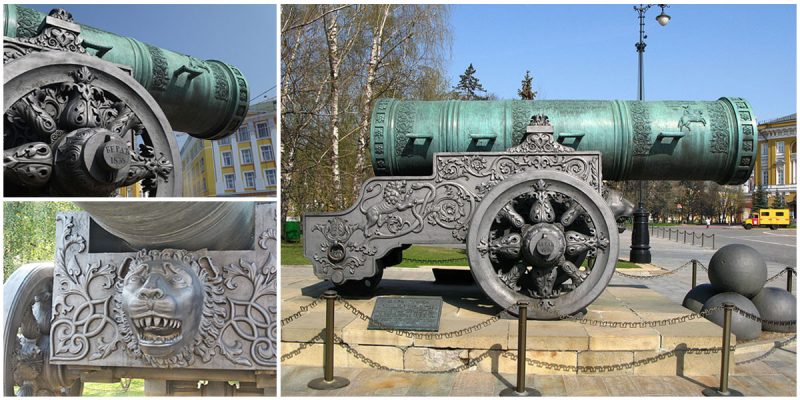Cast in 1586 in Moscow’s Cannon Court by the famed Russian bronze master Andrey Chokhov on the orders of Tsar Feodor Ioannovich, the sovereign ruler of All Great Russia, the Tsar Cannon is recognized as the largest bombard by caliber in the world.
However, it is technically classified as a stylized mortar rather than a cannon because of the very low ratio of the length of its barrel to its caliber.
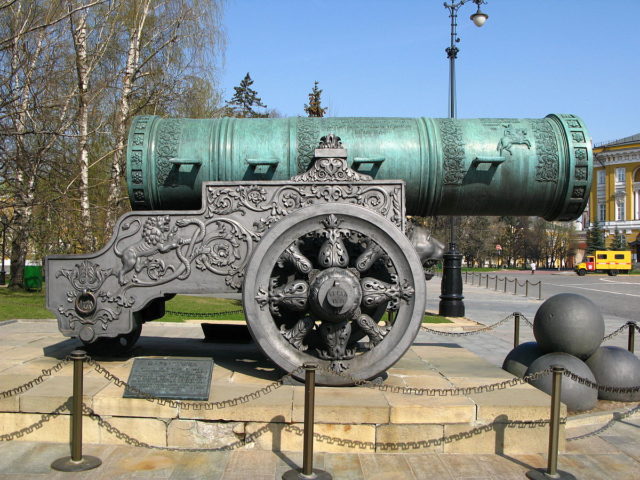
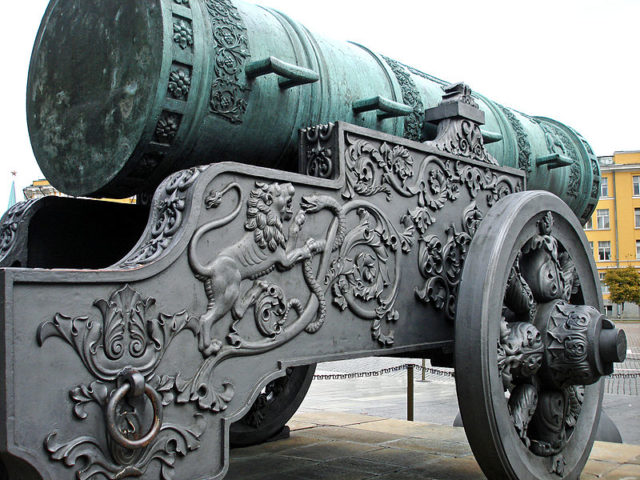
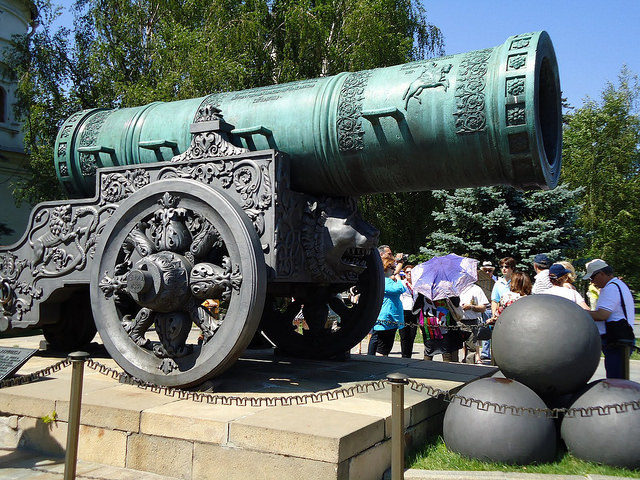
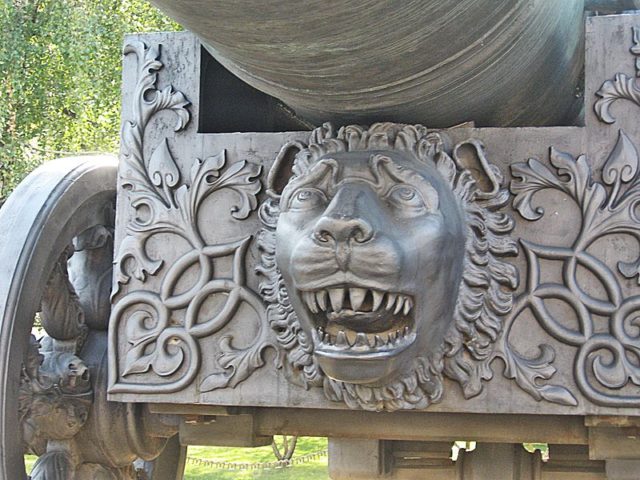
This bronze weapon was meant to be used for defending the Moscow Kremlin and it was most likely designed to fire 800 kg stone grapeshot on attacking enemy troops, hence its other nickname, “Russia’s Shotgun”.
According to legend, the cannon has never actually been fired. But in the late 20th century it was thoroughly studied by experts in the Artillery Academy and they found a gunpowder residue, indicating that the cannon had been fired at least once but its performance is unknown.
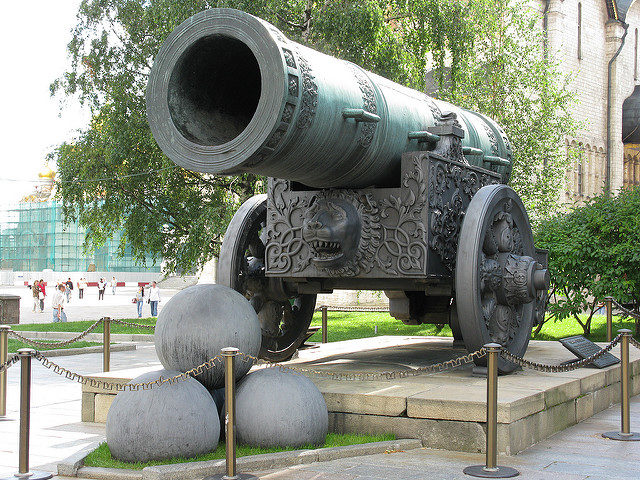
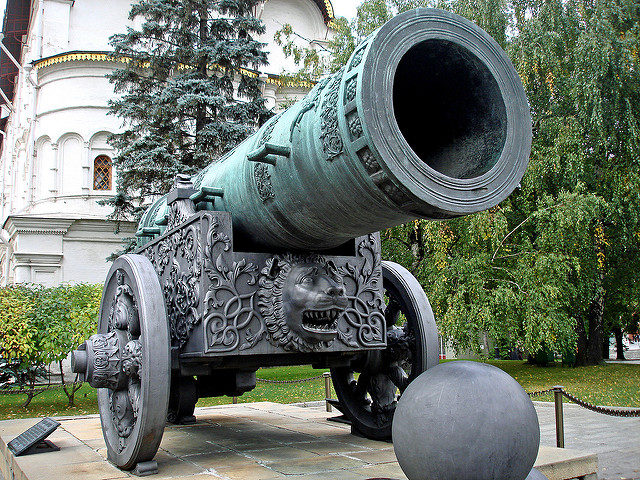
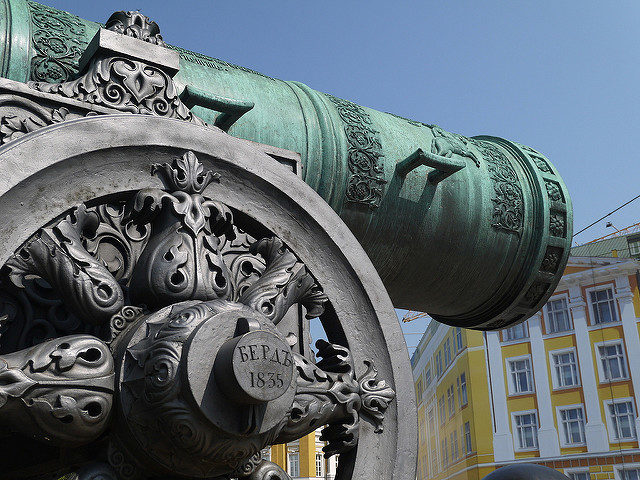
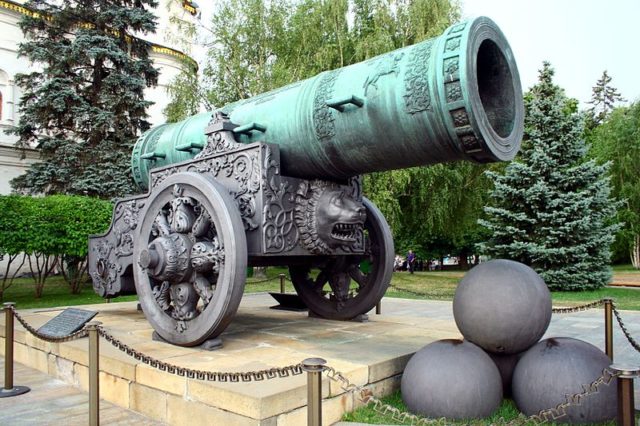
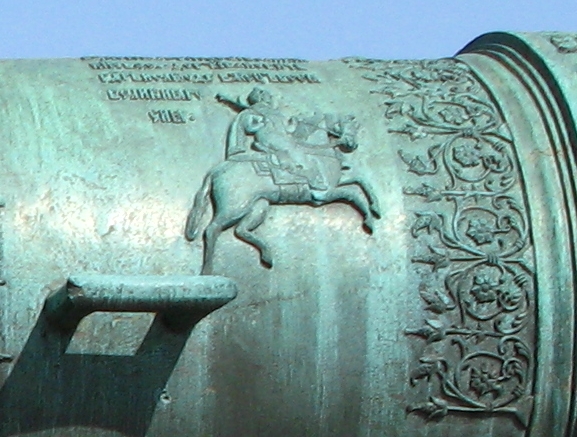
The cannon’s surface is adorned with fine decorative work, memorial inscriptions, cast figured friezes, and located near the muzzle of the barrel, an image of Tsar Feodor Ioannovich riding a horse. The creative minds behind the decorations on the carriage and the cannon itself are the architect A. P. Bryullov and drawings engineer P. Ya. de Witte.
Since 1960 it has stood outside the Kremlin in Moscow on a cast-iron gun carriage along with four cannonballs weighing almost a ton each and produced only for decoration.
